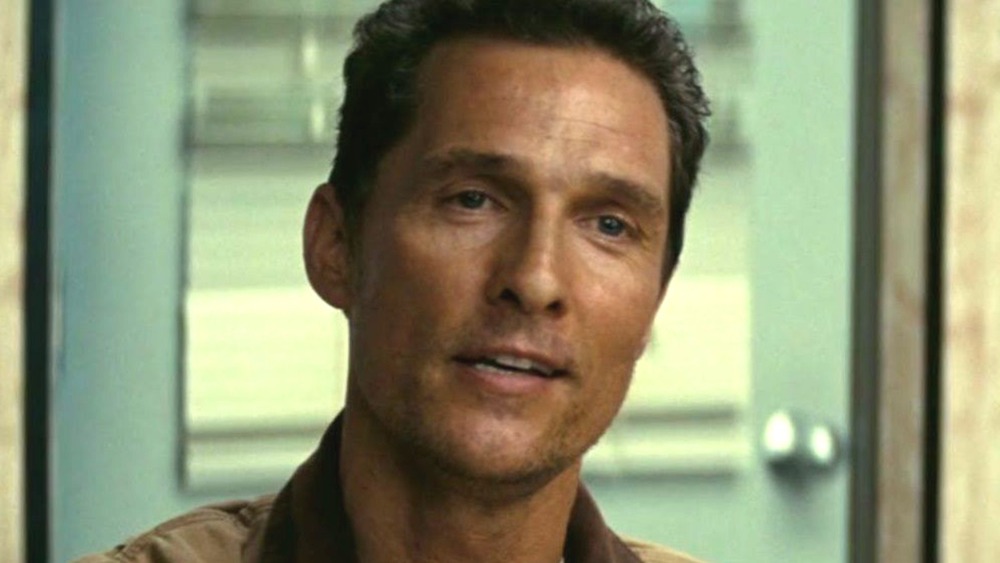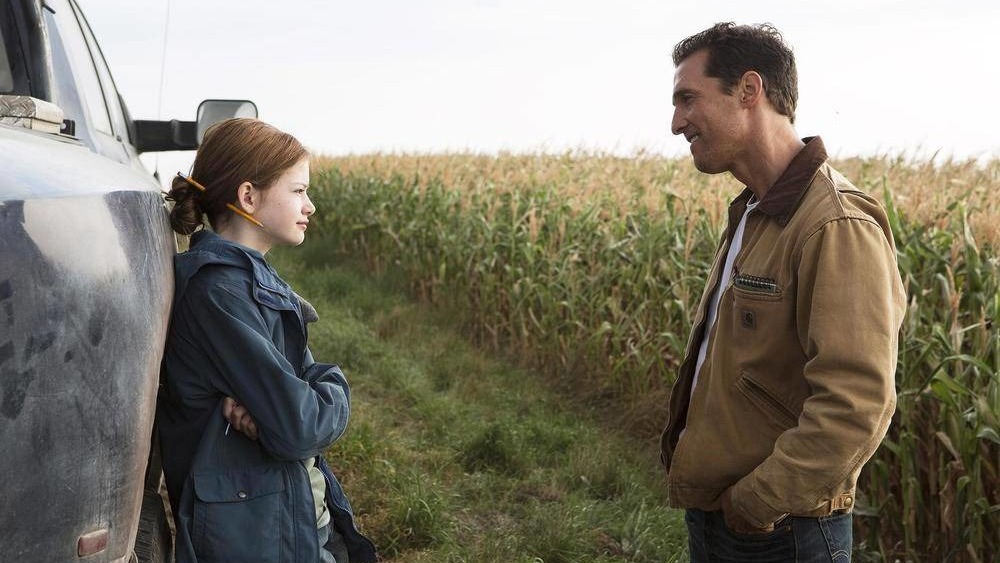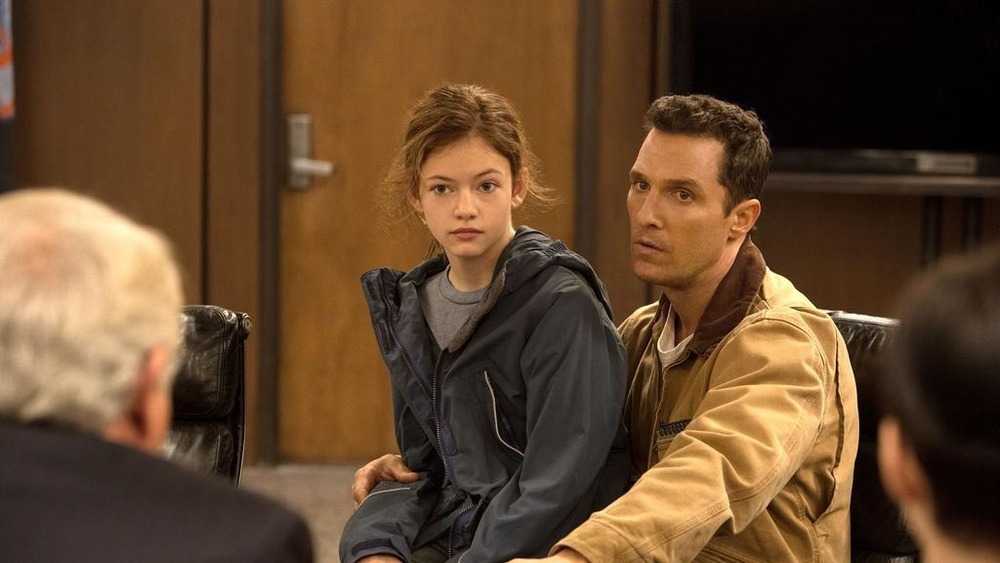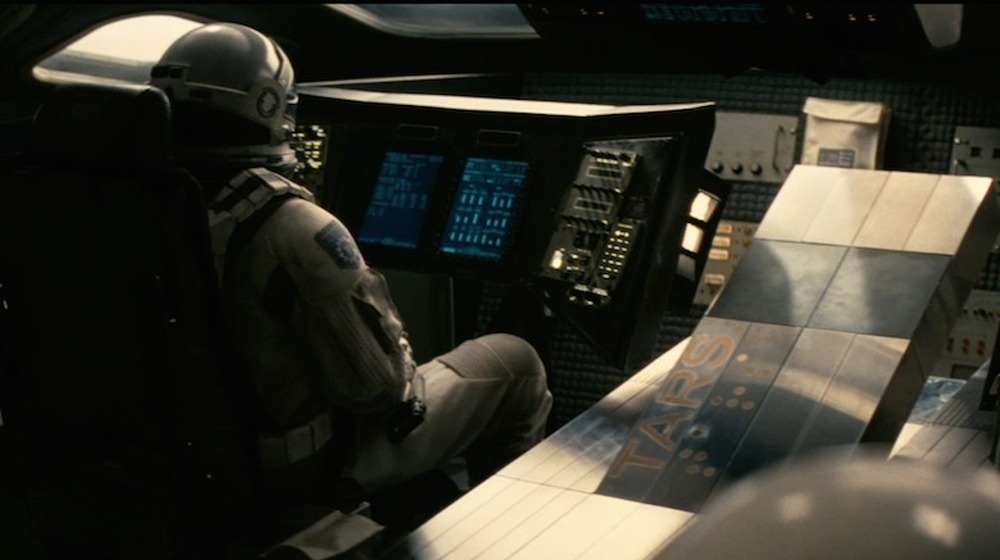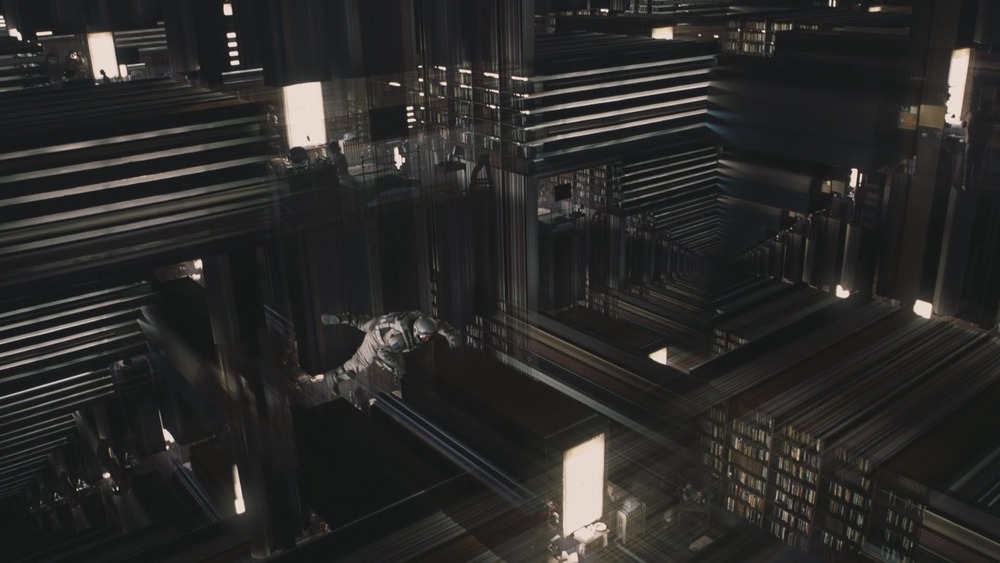Things You Only Notice About Interstellar During A Rewatch
It's not every day you come across a big budget, science fiction movie that's not based on any preexisting intellectual property. Then again, Christopher Nolan isn't your average director, and when he wants to make an interplanetary adventure that ruminates on the nature of humanity, you wind up with something as memorable as Interstellar.
While other dystopian films are pessimistic regarding the future of mankind, this sci-fi epic takes a different approach. The world in which the film takes place may be dead, but it goes to great lengths to show how humans will always find a way to persevere in the overwhelming face of adversity. Coop (Matthew McConaughey) travels the stars looking for another habitable planet while his daughter, Murphy (Jessica Chastain), remains on Earth, barely getting the chance to know her dad, as she takes a job at NASA to solve the existential threat facing society.
Of course, as is the case with most Christopher Nolan movies, things tend to get a little confusing when it comes to the plot of Interstellar. As you're trying to figure out how exactly the Tesseract operates, there are plenty of details that may go over your head. Some movies require multiple watches to truly appreciate, and here are just a few of the details you might have missed if you only saw this film once when it first came out.
Murph's opening line to Coop foreshadows the big twist
Early on in the film where we first see Coop and Murph together, she wakes him up from his slumber, and the first thing she says is, "I thought you were the ghost." It doesn't take long before we learn that the "ghost" in question is whatever force Murph perceives to be causing books to fall from their shelves and for dust patterns to mysteriously form on her bedroom floor. Coop realizes the patterns are actually a code, allowing him to find a top-secret NASA base, and that's where the plot starts to kick in.
Binary codes on dust patterns? It seems a little too convenient, but all is revealed later as Coop falls into a black hole. He winds up in a Tesseract where he's able to manipulate physical objects in the past... or present... time gets kind of confusing at this point. What's important is that Coop turns out to be the ghost all along.
So when Murph first says, "I thought you were the ghost," she wasn't wrong. Coop becomes the supernatural force that allows the family to find the NASA base in the first place, creating a perfect circle.
The NASA scientists reactions reveal why they asked Coop to lead the mission
After following the dust patterns, the father and daughter wind up at NASA where Coop runs into an old acquaintance, Professor Brand (Michael Caine). He, along with several of his colleagues, persistently question the duo about how exactly they found the base, insisting there's no way someone could find it without inside information. It's at this point they mention an anomaly and Murph says the word, "Gravity," and they all suddenly look very intrigued.
It's not long until they ask Coop to lead the mission to find a habitable planet for humanity, which may seem a bit like a plot hole at first glance. After all, Coop is a retired pilot who's worked as a farmer as of late. It seems unlikely he would be the most qualified person for the job just going off recent experience.
While it's never explicitly stated, the scientists know that Coop was sent to NASA by "Them." Years earlier, NASA discovered a wormhole near Saturn that was placed there by beings from the fifth dimension that leads to 12 planets that can possibly sustain life. Their reactions reveal that these entities must have also communicated to Coop, which is why they trust him to go on the mission even though all logical signs point to someone else needing to lead the charge.
Interstellar contains several homages to 2001: A Space Odyssey
As one of the most influential science fiction films of all time, it's only natural for the legacy of 2001: A Space Odyssey to pop up in Nolan's work. Both films deal with interplanetary travel, but if you look carefully, you can spot some other similarities throughout the design of Interstellar.
For starters, it's hard not to look at the robots TARS and CASE and not be reminded of the massive monolith that appears in the beginning of the film with their similar rectangular shapes. There's also a moment after the astronauts first blast off, and TARS tries to make them feel more comfortable by making a joke about how he's going to use them all as its slaves. After Coop makes a comment about it, TARS jokes about sending him through the airlock. There definitely seems to be a murder-y theme to the unit's humor that calls to mind the psychotic nature of HAL 9000. We wonder if the humans are aware of the references considering the film would be almost 100 years old by the time Interstellar's events take place.
It's also hard not to draw parallels between the aesthetic inside the Tesseract and the interior of HAL's processing core. The intersecting lines create an almost otherworldly appearance to show just how far from Earth the protagonist has come.
The poem highlights Interstellar's themes
"Do not go gentle into that good night" by Dylan Thomas serves as a motif throughout the film. It's recited shorty after the astronauts take off in their mission to find another planet, and Professor Brand starts the poem right before he passes away. It's not just there for Nolan to earn some brownie points with his old English teacher; it actually functions to demonstrate what humanity needs to do to survive in a world turned sour.
This is seen in the first three lines of the poem, which goes as follows:
"Do not go gentle into that good night,
Old age should burn and rave at close of day;
Rage, rage against the dying of the light."
The poem on its own is from the perspective of a son whose father is about to die, and the son wants him to continue fighting until his very last breath (via Lone Star College). In the context of Interstellar, the poem is a reflection of how mankind has overcome so much, and even though Earth seems to be on its last days when the film begins, hope is still out there. Others may have relinquished their fates, but there's still a chance.
Interestingly enough, Coop saves the day by sacrificing himself by going into the black hole, thus allowing himself to become the fifth dimensional being that kicks off the plot in the first place. He closes his eyes and goes into the unknown, or in another way of putting it, he does go gentle into that good night.
Christopher Nolan's movies are often packed to the brim with details and Easter eggs that require multiple watches to catch them all. That goes double for Interstellar, which was his most cerebral film yet... that is until Tenet came out and really threw audiences for a loop.
